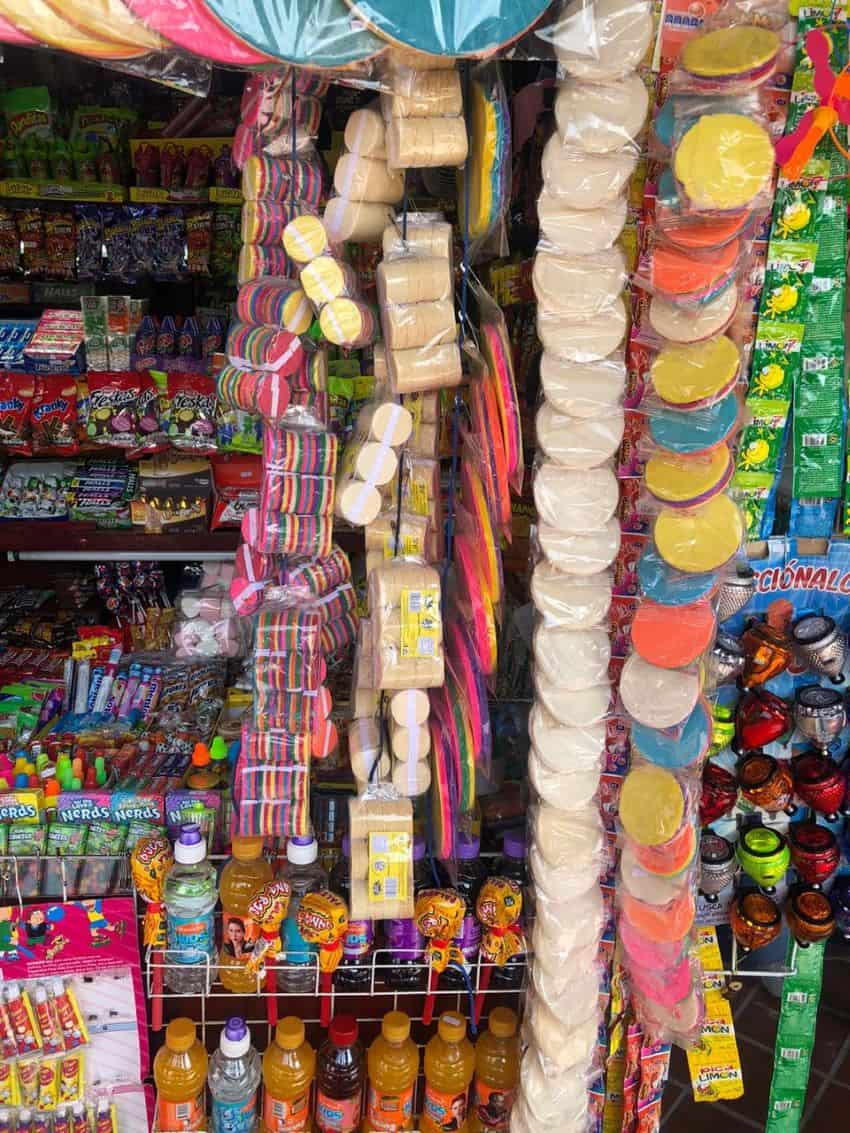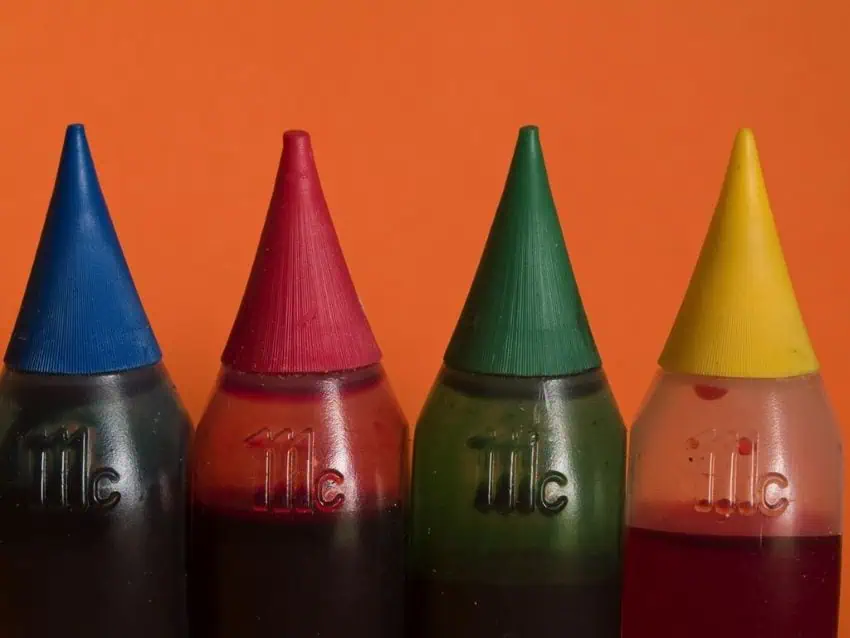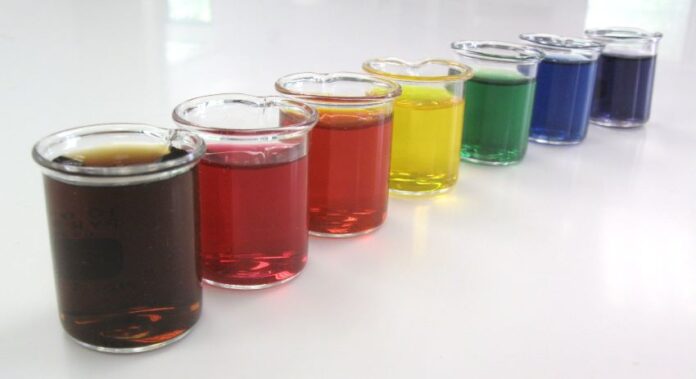Food policy in the U.S. is about to get a colorful shakeup: Secretary of Health and Human Services Robert F. Kennedy, Jr. announced a plan to eliminate eight synthetic, petroleum-based food dyes from the U.S. food supply by the end of 2026. This follows the FDA’s recent ban on FD&C Red No. 3, which took effect on January 15.
While these changes are happening in the U.S., it got me thinking: If Mexico were to follow suit, how would such a ban affect the rainbow of snacks in stores and markets, and the elaborate piñatas at children’s birthday parties?

The colorful culprits
Throughout much of the world, food has become as much about visual pleasure as taste. Color is an easy way to captivate a hungry patron’s attention, which is why synthetic food dyes have played such a big role in the food industry.
The first synthetic food dye dates back to the 1850s with English chemist William Henry Perkin’s discovery of mauveine. While it revolutionized the fashion industry, this purple hue also snuck itself into sweets under the names of violet paste, chrome violet and Perkin’s violet. Although mauveine eventually disappeared from our plates, the use of synthetic colorings in food became widespread.
Today, these nine synthetic food dyes are linked by some researchers to serious health issues, from childhood hyperactivity and behavioral problems to thyroid disruption and cancer risks.
- FD&C Red No. 40
- FD&C Yellow No. 5
- FD&C Yellow No. 6
- FD&C Blue No. 1
- FD&C Blue No. 2
- FD&C Green No. 3
- Orange B
- Citrus Red No. 2
- FD&C Red No. 3 (already banned in the U.S.)

While the U.S. is just now moving to restrict synthetic food dyes, many countries were ahead of the curve for years. Norway and Iceland banned Red No. 40 (Allura Red) in food products long ago. Sweden, Switzerland, Germany and Austria have also banned or heavily restricted certain synthetic food colorings such as Yellow No. 5 and Red No. 40. Since 2010, the European Union has required foods containing certain synthetic dyes to carry a warning label stating they “may have an adverse effect on activity and attention in children.”
Mexico, meanwhile, operates in a colorful middle ground. Most synthetic food dyes are still permitted here, though with varying labeling requirements. Some major players like Mondelēz have already dropped Red No. 3 from their Mexican lineup, but we haven’t seen a comprehensive ban materialize… yet.
A technicolor tour of Mexican treats
Imagine Mexico without its technicolor treats. What would botana carts look like? Picnics in the park? Grocery store checkouts? Disorienting, to say the least.
Say goodbye to those radioactive-looking gomitas that stain your lips for hours. Gone would be the chance to suck on a mouth-puckering Pulparindo or Lucas candy. Even the rainbow-hued paletas that make for perfect Instagram shots couldn’t escape. All would need serious makeovers without Red No. 40 and Yellow No. 5.
Salty snacks wouldn’t get off easily either. That suspicious orange dust coating your fingers after a bag of cheese puffs? Yellow No. 6. The blazing red powder that makes Takis so attractive? Red No. 40. Even Sabritas and Barcel products would need to find new ways to stay on shelves.
In short, the following bites would be in serious danger of disappearance:
Candies: Pulparindots, Lucas, Rockaleta, Vero
Snacks: Flavored Sabritas chips, Takis, Cheetos, several brands of cacahuates japoneses
Beverages: Sodas like Jarritos, powdered drink mixes, including Tang
Baked Goods: Panes dulces like pink-and-yellow conchas, polvorones de colores, merengues
A more natural future?
If Mexico followed the United States’ lead, it would join a growing club of countries that have already taken action against synthetic food colorings. The transformation wouldn’t just be technical: it would encourage a full marketing overhaul, finding new ways to meet consumer expectations and reinvent how traditional treats should look in a new, dye-free era.
The good news? There are natural alternatives waiting in the wings. Carotenoids from carrots and marigolds can provide yellows, oranges and reds. Anthocyanins from berries offer reds, purples and blues. There’s chlorophyll from plants for greens, turmeric for yellows and betalains from beets for a perfectly pink icing on your concha. Companies like Nestlé have already started using spirulina and beetroot extract in other markets, proving that nature can be just as colorful as a chemistry lab.
Perhaps the adjustment period would be challenging at first. Imagine kids’ faces when they bite into their favorite snack only to find it’s a slightly different shade of nuclear red. But in the long run, a Mexico with more naturally colored foods might be a brighter place indeed — even if the colors themselves are slightly muted.
Bethany Platanella is a travel planner and lifestyle writer based in Mexico City. She lives for the dopamine hit that comes directly after booking a plane ticket, exploring local markets, practicing yoga and munching on fresh tortillas. Sign up to receive her Sunday Love Letters to your inbox, peruse her blog, or follow her on Instagram.
